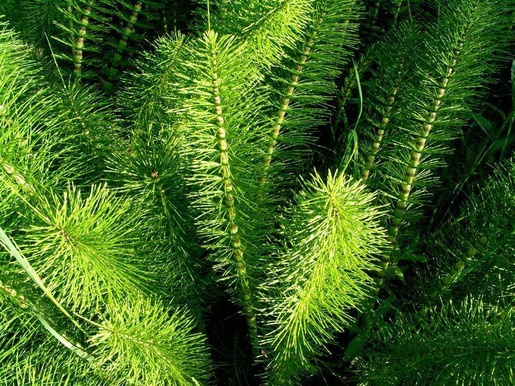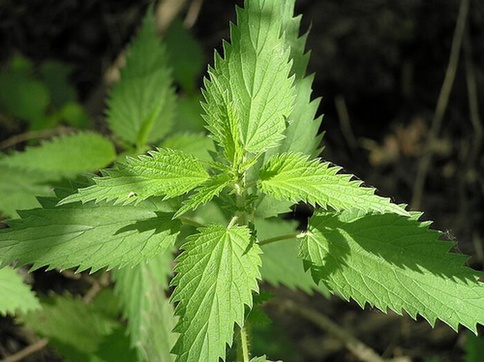L’ostéoporose peut s’immiscer dans votre vie du jour au lendemain et ce, malgré les changements d’hygiène vitale qui pourraient avoir été mis en place pour la prévenir. Parfois ce mal arrive malgré tout sans crier gare, parce que les changements n’ont pas été suffisants ou simplement parce qu’il en est ainsi pour votre organisme. Si on s’y prend suffisamment tôt, les alternatives douces peuvent aider chaque souffrant pour qu’il puisse vivre son quotidien de manière bien plus souple et agréable. La médication chimique n’est pas indispensable pour tous, il est d’ailleurs plus intéressant de passer par la magie des plantes pour soulager ce genre de maux.
En phytothérapie, nous conseillerons dès lors la prise de plantes reminéralisantes pour renforcer la masse osseuse abîmée. Même si l’usage de plante de ce type est bien plus intéressant en prévention, la qualité riche de ces végétaux peut malgré tout aider un corps en souffrance et limiter les dégâts déjà en cours.
La prêle : plante aux vertus rares et irremplaçables
La prêle, Equisetum arvense, de son nom courant « Herbe à récurer » ou encore « queue-de-rat », « queue-de-renard » fait partie de la famille des équisétacées. La plante contient des tanins, de la résine, des sucres ainsi que de la pectine, de la silice, de la vitamine C et du glutathion. De par sa haute composition en silice, la prêle est une plante vraiment très intéressante au niveau de la réminéralisation organique. De plus, d’autres minéraux la composent comme le calcium, le sodium, le fer, le potassium, le magnésium ainsi que le soufre, entre autres, pour en faire une plante aux vertus rares et irremplaçables.

Directement assimilable par l’organisme, la prêle est un bijou en phytothérapie de par sa qualité exceptionnelle. Utilisée dans de nombreux domaines, elle est vraiment adaptée pour les personnes qui pourraient souffrir de rhumatismes ou encore d’ostéoporose. La prêle est donc disponible pour tout un chacun et ce, sous diverses formes : en gélule, en poudre, feuilles séchées, en teinture mère, en jus et même en ampoule. Chacune de ses possibilités et sa posologie propre en fonction de l’objectif voulu. Bien entendu, selon le degré de souffrance que l’on subit, on utilisa plutôt une forme que l’autre et à un degré différent.
Bien évidemment, étant une plante reminéralisante, elle sera également très utilisée si l’on souffre d’ongles fragiles, de cheveux abîmés ou cassants, de caries dentaires, de rhumatismes, d’arthrose, … qui sont des troubles liés à ce souci de minéraux. Comme pour chaque plante, la prêle est à utiliser avec savoir-faire.
L’ortie fraîche
Egalement connue pour ses qualités en phytothérapie, l’ortie – Urtica Dioica, à ne pas confondre avec sa petite sœur Urtica Urens – est également une plante à mettre en avant pour ses propriétés reminéralisantes. En effet, celle-ci renferme des chlorophylles, de la sérotonine, du potassium, du fer, du calcium, du soufre, du manganèse et enfin de la silice et des tanins. L’ortie est une alliée de taille car ses bienfaits sont très nombreux et là encore, les méthodes de prises sont différentes et adaptables à vos besoins. Bien entendu, la consommation d’ortie fraîche doit se faire avec des connaissances en botanique pour éviter de subir les dents de la plante qui contiennent de l’acide formique qui irrite la peau.
Tout comme son amie, la prêle, l’ortie est facilement assimilable par l’organisme.
Bien évidemment, les plantes ne sont pas des magiciennes, elles ne réparent pas mais elles soutiennent un organisme en cours de transformation. Il est donc d’une importance capitale de bien comprendre que les conseils donnés en phytothérapie doivent aller de pair avec une nouvelle hygiène de vie qui associe alimentation adaptée au problème et une hygiène physique qui n’est autre que le sport. Contrairement à la médication classique et chimique, la naturopathie soutient et aide l’organisme par une prise en charge globale




